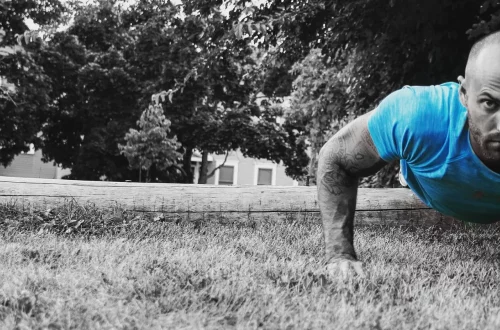
Understanding Achilles Heel Support for Optimal Foot Health
The importance of foot health is often overlooked in our daily lives, yet it plays a crucial role in our overall well-being. Our feet bear the weight of our bodies, absorbing shock and providing stability as we navigate through various terrains and activities. When we think about maintaining our health, we often focus on diet, exercise, and mental well-being, but the condition of our feet deserves equal attention.
One of the key aspects of foot health is the support provided to the Achilles heel, which is essential for optimal mobility and functionality. The Achilles tendon, connecting the calf muscles to the heel bone, is the strongest tendon in the body but is also susceptible to injury, particularly when proper support is lacking. Understanding the significance of Achilles heel support can lead to better foot health, enhanced athletic performance, and a reduction in the risk of injury.
As we explore this topic, it becomes evident that investing in proper footwear, understanding the biomechanics of our feet, and incorporating preventive measures can greatly contribute to maintaining healthy feet. Whether you’re an athlete, a casual walker, or someone dealing with chronic foot issues, understanding how to support your Achilles heel is vital for an active and pain-free life.
Importance of Proper Footwear
Choosing the right footwear is one of the most crucial steps in ensuring optimal foot health, especially regarding Achilles heel support. Shoes that fit well and provide adequate support can significantly reduce the risk of injury and discomfort. When selecting footwear, it’s essential to consider factors such as arch support, cushioning, and heel height.
Shoes with appropriate arch support help distribute weight evenly across the foot, reducing strain on the Achilles tendon. A good arch support system can alleviate pressure points and promote better alignment, which is vital for maintaining healthy foot mechanics. Moreover, adequate cushioning absorbs shock during high-impact activities, providing additional protection to the Achilles area.
Heel height also plays a significant role in foot health. Footwear with a raised heel can increase the strain on the Achilles tendon, especially if worn for extended periods. Conversely, flat shoes may not provide enough support for those with specific foot types or conditions. Striking a balance with the right heel height is essential to prevent tension and potential injury.
Additionally, it’s worth noting that not all shoes are created equal. Athletic shoes designed for specific activities, such as running or walking, often incorporate technology aimed at providing better support and shock absorption. It’s advisable to seek out shoes that are specifically tailored to your activities to ensure the best possible support for your feet.
In summary, investing in quality footwear tailored to your individual needs is a fundamental step towards maintaining foot health and providing support to the Achilles heel. Proper shoes can make a significant difference in overall comfort, performance, and injury prevention.
Biomechanics of the Foot
Understanding the biomechanics of the foot is crucial for appreciating how our bodies function and how we can protect them. The foot comprises 26 bones, 33 joints, and numerous muscles, tendons, and ligaments that work together to facilitate movement. The intricate design allows for flexibility and strength, enabling us to walk, run, and jump while absorbing shock and maintaining balance.
The Achilles tendon plays a pivotal role in this biomechanical system. It connects the calf muscles to the heel bone, allowing for the extension of the foot during activities like walking and running. When the calf muscles contract, they pull on the Achilles tendon, which then lifts the heel off the ground, enabling forward motion.
However, improper biomechanics, such as overpronation or supination, can lead to excessive strain on the Achilles tendon. Overpronation occurs when the foot rolls inward excessively, while supination happens when the foot rolls outward. Both conditions can lead to misalignment and increased stress on the tendon, resulting in potential injuries like tendinitis or ruptures.
To counteract these issues, it is essential to engage in exercises that strengthen the muscles surrounding the foot and improve flexibility. Stretching the calf muscles and Achilles tendon can enhance their elasticity, reducing the risk of injury. Moreover, incorporating strength-training exercises that target the lower legs can help create a more balanced and resilient foot structure.
In conclusion, understanding the biomechanics of your feet is vital for preventing injuries and ensuring optimal function. By recognizing how various movements affect the Achilles tendon, you can take proactive steps to support its health.
Preventive Measures for Achilles Tendon Health
Preventing Achilles tendon injuries involves a multifaceted approach that includes proper training techniques, appropriate footwear, and regular maintenance of foot health. One of the most effective ways to prevent injury is through a well-structured training regimen that promotes gradual progression. Rushing into new activities or increasing intensity too quickly can place undue stress on the Achilles tendon.
Incorporating rest days into your training schedule is equally important. Overuse is one of the leading causes of Achilles tendon injuries, as the tendon requires time to recover from strenuous activities. Listen to your body and allow for adequate recovery, particularly if you experience any discomfort.
Stretching and strengthening exercises should also be regular components of your routine. Incorporating calf stretches can enhance flexibility in the Achilles tendon, while resistance training can build strength in the surrounding muscles, providing better support. Focus on exercises that target both the calf muscles and the entire lower leg to create a balanced strength profile.
Additionally, cross-training can be beneficial. Engaging in a variety of activities can reduce the repetitive impact on the Achilles tendon, allowing it to recover while still maintaining overall fitness levels. Activities like swimming or cycling can provide excellent cardiovascular benefits without placing excessive strain on the feet.
Lastly, paying attention to any signs of discomfort or pain is crucial. Early intervention can prevent more severe injuries. If you experience persistent pain in the Achilles area, it’s wise to consult a healthcare professional for advice.
In summary, implementing preventive measures is essential for maintaining Achilles tendon health. By focusing on gradual progression, incorporating rest, and engaging in targeted exercises, you can significantly reduce the risk of injury and enhance your overall foot health.
The Role of Orthotics and Foot Supports
Orthotics and foot supports can play a significant role in maintaining the health of the Achilles tendon and overall foot function. These devices are designed to provide additional support, improve alignment, and alleviate pressure on specific areas of the foot.
Custom orthotics are tailored to an individual’s unique foot structure and can address various issues such as flat feet, high arches, or overpronation. By providing the necessary support, they can help reduce stress on the Achilles tendon and promote better biomechanics during movement.
Over-the-counter arch supports and heel cups can also offer immediate relief for individuals experiencing discomfort. These products can enhance cushioning and support, particularly during activities that place additional strain on the feet.
In some cases, individuals may benefit from heel lifts, which are designed to reduce tension on the Achilles tendon by elevating the heel slightly. This can be particularly useful for those recovering from injuries or dealing with chronic pain.
However, it’s essential to consult with a healthcare professional before using orthotics or foot supports. A proper assessment will help determine the best course of action and ensure that any devices used are suitable for your specific needs.
In conclusion, orthotics and foot supports can be valuable tools in maintaining Achilles tendon health. By providing customized support and addressing specific foot mechanics, these devices can contribute to overall foot health and injury prevention.
**Disclaimer:** This article is not intended as medical advice. For any health concerns or medical issues, please consult a qualified healthcare professional for guidance.




